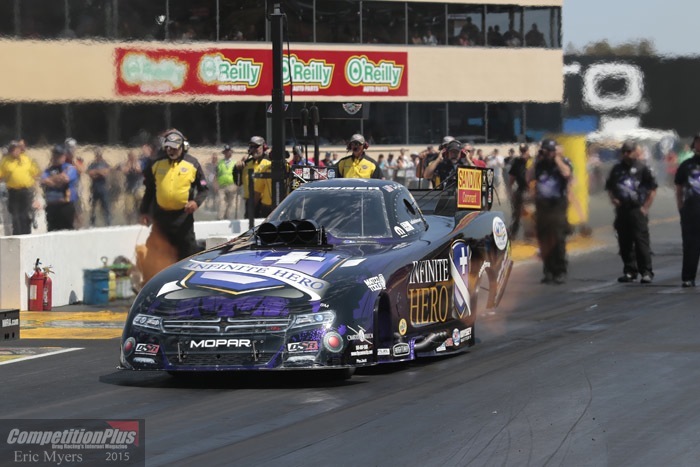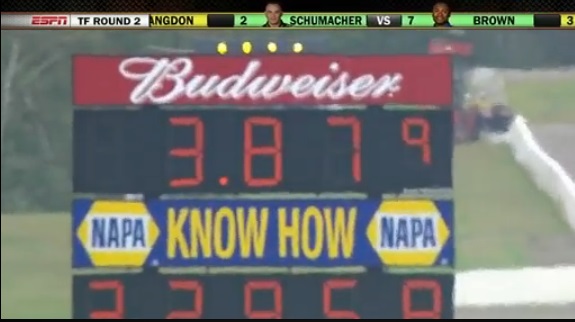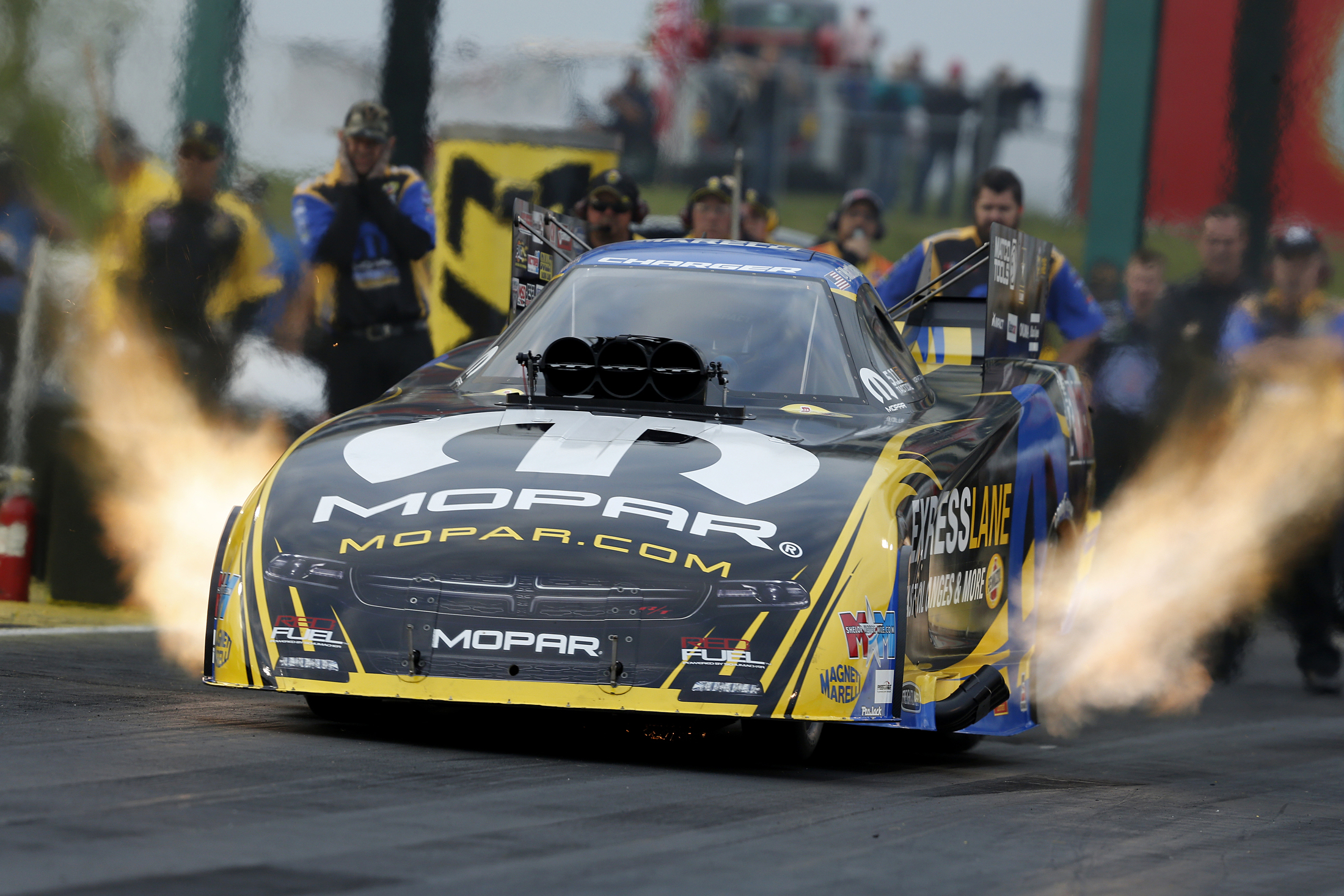FUNNY CAR TEAMS REACT TO STANDARDIZED HEADER ANGLES EDICT FROM NHRA


NHRA announced the angle of the headers on Funny Cars would become standardized starting with the Mopar Mile-High Nationals, outside of Denver, Co.
In a memo issued to teams on July 12, NHRA's tech department said, "Effective immediately the minimum header angle will be 32 degrees. Additionally, there will be a maximum header pipe O.D. of 2.75 inches as well as the I.D. must remain constant beginning 8 inches below the header flange to the exit of the header (i.e. stepdown headers not permitted).
"We will continue to evaluate header angles with possibly making additional rule changes for 2017. If additional rule changes are made, we will communicate these change(s) prior to the end of the 2016 season."
A source close to the situation said the NHRA's decision was made in the name of safety, because of the ill-handling characteristics of the cars since the laid back headers became more common, as well as the potential continued cost of development.
The decision has been met with mixed reactions from some of the teams affected.
Driver Jack Beckman, whose team is credited with initiating the laid back header movement last season in Sonoma, Ca., said the NHRA's edict will not affect the Inifinite Hero team.

“We are OK with it,” Beckman said. “We’ve kind of evolved to where our pipes are and I would imagine there’s another team out there that has them at 32 degrees. The problem is the more you sweep them back, the more you start toasting the side of the body. If you look at the staging lanes, there are a lot of ugly looking Funny Cars when you look at them up close because they all have bubbles and blisters on them with the swept back headers.
"Basically, what they’ve done (the swept back headers) is they’ve knocked about .08 of a second off what these cars are capable of running."
The performance gains of the Funny Cars were so significant the performance gap between the dragsters and funny cars had narrowed from two-and-half tenths of a second to two-tenths and less at most races.
Matt Hagan, Beckman's teammate, isn't a fan of the rule change in midseason.
“We all have combinations we’re working on and I think there were some people raising hell about it and that’s fine, everybody has their own opinion,” Hagan said. “At the end of day, you probably shouldn’t screw with everybody’s combination unless it’s a safety issue. They knew about these things last year in Sonoma, so don’t change things in the middle of the year when everybody is beating on a combination and getting ready for the Countdown.
"That’s probably the problem I have with it. But, it’s like anything, I just get paid to do a job and keep my mouth shut and show up and drive a race car. I love to see the Funny Cars go fast and I love to see the sport grow, and at the end of the day it’s not a safety issue there was no reason for them to change it.”
On May 20, 2016, Hagan had a historic run during qualifying in the Kansas Nationals at Heartland Park when he set both ends of the national record with a 3.862-second run at 335.57 mph.
Hagan's speed was the fastest of any Funny Car or Top Fuel dragster in NHRA history on the current 1,000-foot track, and the fastest a Funny Car has ever gone at the end of a quarter-mile.

“110 percent I do not feel like it is a safety issue,” Hagan explained. “I think NHRA doesn’t want to see these cars go over 330 mph. They can say it is this or that, but at the end of the day, fans come to see fast runs. That’s what they are paying for and spending their hard-earned money for. We are showmen, we are there to put on a show and nobody wants to see these cars run 4-flat. Being the showman that John Force is and I am and everybody else is, we want to go faster and the fans want to see us go faster.”
The problem, Beckman believes, is that an unregulated header angle will only make for future development of headers to compensate for the damage it does to the bodies.
Ron Capps learned the hard way at Norwalk when his team created a plate to deflect the heat from the headers, which was essentially blowing the sponsor decals from the car. He ran the modified headers at one race but was reprimanded by the NHRA's tech department at a second race for running an unapproved aerodynamic device and thus had a qualifying run tossed, and forfeited three qualifying bonus points.
“Here’s the problem if we were going back any further with these things, then they need to be wider otherwise they are going to toast the bodies,” Beckman added.
"I hate rules as much as the next guy does," said second-generation Funny Car racer Chad Head. "Nitro racing in the very sense is supposed to be unlimited. This rule allows everyone to continue running what they have been all this year. It looks like the NHRA did their homework, and talked to the crew chiefs. They made a rule where no one has to throw anything away."

Beckman said he understands the NHRA's intention by passing down the edict.
"I think NHRA’s intention was to see what’s out there and say OK no more than this," Beckman said. "I think a couple of the teams have complained that’s hard to keep up with the bigger-funded teams that can come up with the trick of the week header. The other thing it has made the cars a little more prone to wheel stand and it has made them a little bit more difficult to drive. I understand their move here.
"You hate to be handcuffed and you love to have the advantage of ingenuity, but if you look at it the rules are so stringent for fuel cars with injector openings, blower opening, fuel width, there are so many things that are restricted on these cars already that you know what tapping off the header wars, it is still going to be just as exciting, we will find the performance somewhere else.”
Hagan wonders if the race fans will be as patient waiting for the increases, considering how quickly the advances have come in the class over the last year.
“The problem with it is, is that everybody has seen a Funny Car go 3.90s and that’s the standard now, and there a bunch of Funny Cars running 3.80s,” Hagan said. “Say you go back to the way it was before we did this, you’re going to be running 4-flat, 4.10 and it’s a huge difference and it’s not what the fans are going to want to see. If they want to keep the fans coming and the sport going and the people in the seats then they don’t need to go too far backwards with everything.”




































